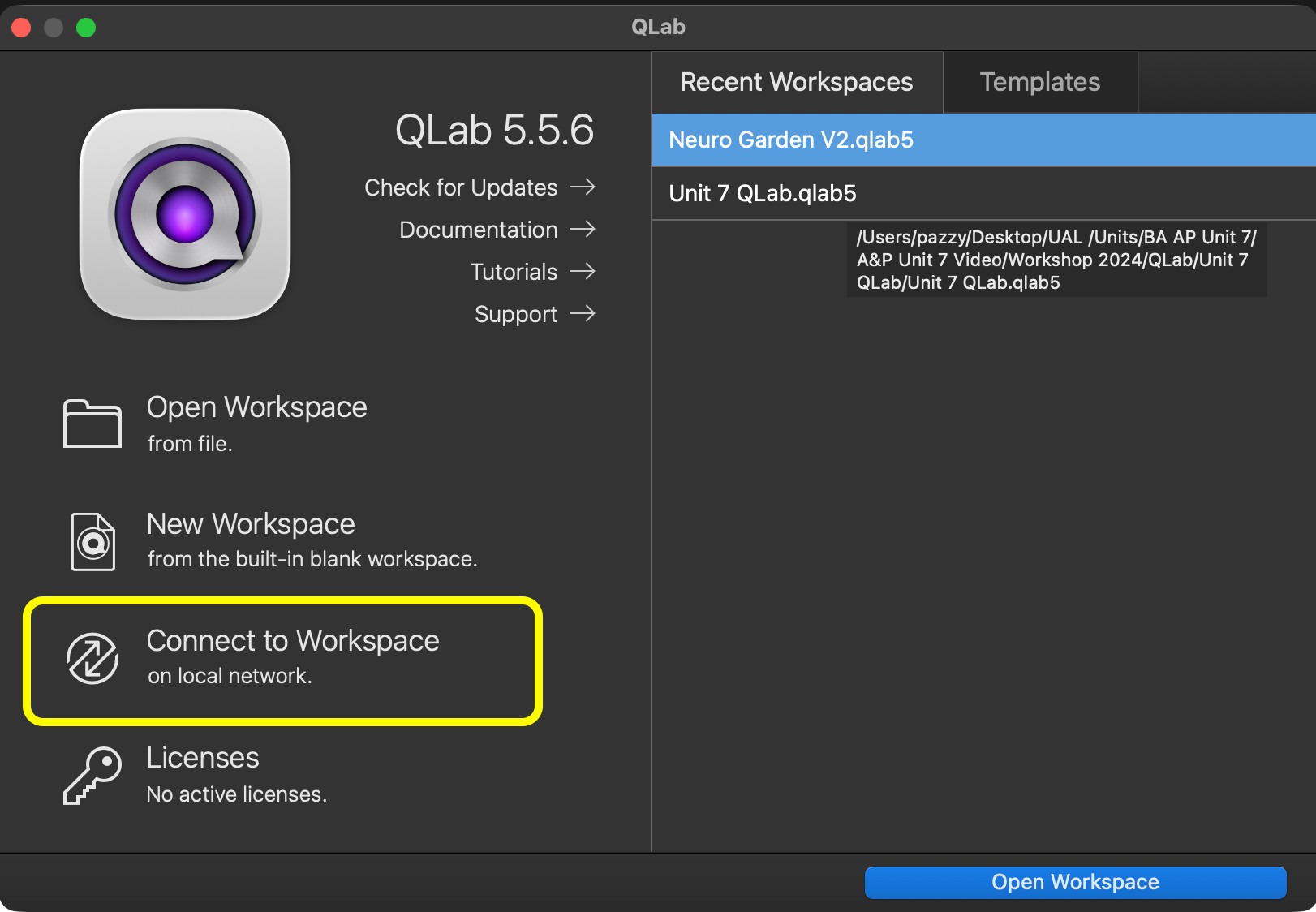No, but if you're working on macOS you can just use Apple's built-in remote access feature. I do this nearly every day because I have to work on and test with multiple computers simultaneously. I also do this to keep the show computer in a theatre up in the booth and remotely program from my laptop down at the tech table.
TeamViewer is cross-platform as well and I've also been using that for over a decade.
There's also Parsec and other remote access tools.
Hello Izzy community!
I'm looking for a elegant solution to this: connecting to an Isadora Project from two computers over LAN.
I was working on a project using QLab 5 last week and I came across this option:

QLab's "Connect to Workspace" works extremely well and was very simple to setup.
Does a similar option exist with Isadora?
Take care! Best wishes,
Simon
Please open a support ticket using the link in my signature if you haven't already
Still using the old adrenalin driver. Even with latest versions of isadora.
Could use some debug too. 👍
Up!
@dusx As always Ryan, thanks you for your creativity and creative quickstart tools. You rock !
@woland + @Skulpture + @jfg
Thanks guys
There's plenty to work with in all your suggestions. @jfg exactly what I am trying to achieve.
:-)
J1M
@gunther @DusX Going to necro this thread because I've been having this exact problem on my mini-PC since winter 2023/2024. I can't downgrade drivers because it causes issues with Lightroom if I do. Has Troikatronics not solved this yet?
@video-architect said:
preferably by adding a 'carriage return'. but could be through reducing text size.
Also both of these could be accomplished programatically with some logic.
Additionally, if the text is known ahead of time and you want to avoid seeing the adjustments being made live, you could have two Stages with one of the Stages being what you're sending to the video output, and the second Stage being a Virtual Stage where the adjustments happen to what will be the next piece of text shown. The adjustments made to the second (non-visible) Stage can then be written to the text file with the Data Array actor so that the numbers and text are already corrected for when the Data Array actor hooked up to the real output Stage moves on to show that text.
Also worth noting that with newer iPhones and newer Apple computers that are on the same iCloud account, the iPhone will just show up as a camera source in Input > Live Capture. I think they communicate over Bluetooth, but I can't say for sure how they're talking to each other. I just ran into this while assisting with a workshop last week where the participants had newer phones and computers than I did 